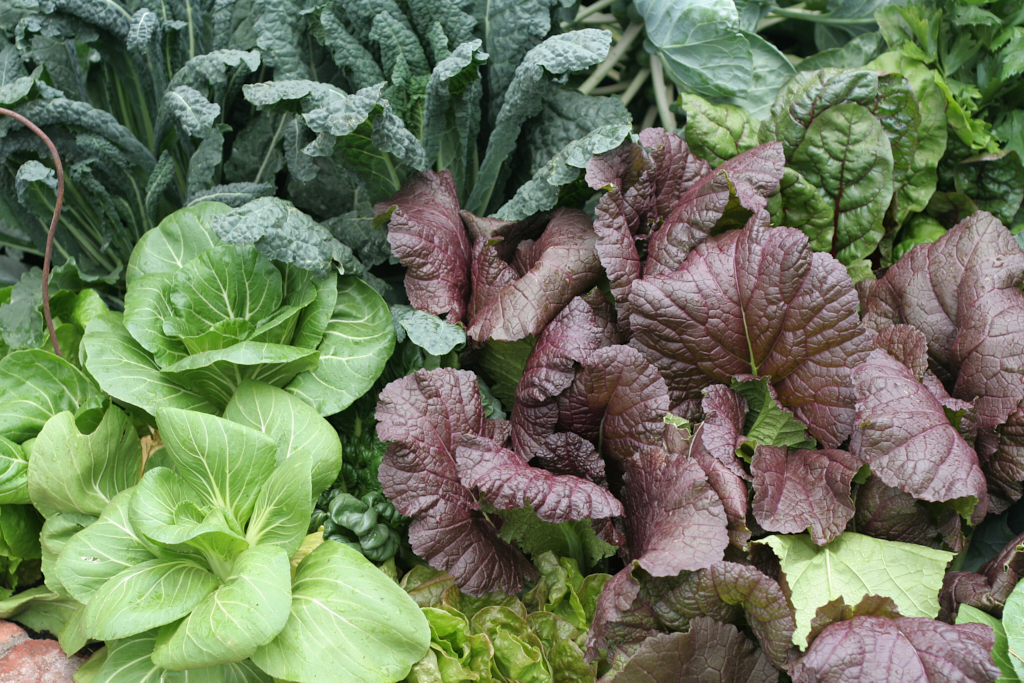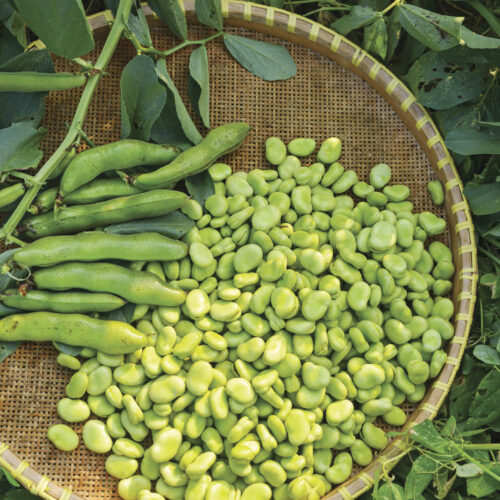Winter fare
2021-05-25T05:54:57+10:00
Some hardy Asian edible plants do well in the cooler months, such as mizuna and Chinese mustard. Why not grow them in your patch?
Late autumn and winter mean misty moonlit evenings, frosty mornings, rain soaked days. Not the time of year to be planting vegetables you say, and certainly not exotic Asian vegetables or herbs. And you would be right about most of them, but not all. There are some hardy Asian plants that do really well in the cooler months. Don’t forget that although much of Asia hovers around the equator there are many regions that, due to their latitude, height or distance from the sea, experience extreme cold. So plants found growing in these regions are all suitable for planting in late autumn and winter in the southern half of Australia.
The obvious ones are the pungent alliums so essential to Asian kitchens (and any self-respecting Western kitchen too). Garlic, shallots, garlic chives and Japanese bunching onions can all be planted now (although its starting to get a bit late for garlic, but if you haven’t put it in yet, the worst that can happen is your bulbs are a bit small). Choose cloves of garlic or shallot bulbs from an organic grower so you can be sure they have not been sprayed with sprout inhibitors. Plant just below the surface in well-drained soil in a sunny position. Garlic chives and Japanese bunching onions are best grown from seed and like a position similar to garlic and shallots.
Coriander is an essential Asian herb for any serious chef but many gardeners struggle with it. This is because they plant it in spring or summer and find it goes to seed and dies after only a few weeks growth. Try planting coriander seed in autumn or winter, then you will be able to harvest it for many months before it goes to seed.
Several Chinese brassicas can also be planted now. These include Chinese mustard (Brassica juncea) which is an excellent ‘cut and come again’ vegetable or salad leaf that adds a distinct pungent flavour to any dish; also mizuna and mibuna (Brassica rapa Japonica Group) which are similar in flavour to Chinese mustard; as well as Chinese broccoli (Brassica oleracea Alboglabra Group) and Chinese Flat Cabbage (Brassica rapa Chinensis Group) both of which provide green leaves and stems for stir fry and soups right through winter and spring.
A delicious salad plant commonly used in Japan is the perennial mitsuba (Cryptotaenia canadensis). The flavour is somewhere between parsley and angelica and the whole plant can be eaten, roots and all. It grows easily from seed.
Two water plants that thrive in colder weather are water celery (Oenanthe javanica) and water cress ( Nasturtium officinale). Both can be grown from seed. Also a small piece of leaf and stem will grow roots if left to stand in water for a couple of weeks. Plant the seed or the rooted piece into a pot filled with any reasonable potting mix. Sit the pot into a deep dish and keep permanently topped up with fresh water. Harvest all year round. Water celery has a very strong celery flavour making it suitable for soups and stews, while the juicy hot peppery flavour of water cress is ideal in salads and sandwiches or as a garnish.
As you can see, even though it may be cold and bleak outside there are lots of interesting greens that can be planted in your garden in autumn or winter to add flavour and inspiration to your culinary masterpieces.






